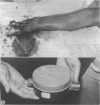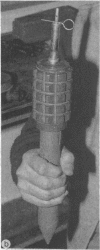Abstract
OBJECTIVE--To describe and quantify patterns of injury from antipersonnel mines in terms of distribution of injury, drain on surgical resources, and residual disability. DESIGN--Retrospective analysis. SETTING--Two hospitals for patients injured in war. SUBJECTS--757 patients with injuries from antipersonnel mines. MAIN OUTCOME MEASURES--Distribution and number of injuries; number of blood transfusions; number of operations; disability. RESULTS--Pattern 1 injury results from standing on a buried mine. These patients usually sustain traumatic amputation of the foot or leg; they use most surgical time and blood and invariably require surgical amputation of one or both lower limbs. Pattern 2 injury is a more random collection of penetrating injuries caused by multiple fragments from a mine triggered near the victim. The lower limb is injured but there is less chance of traumatic amputation or subsequent surgical amputation. Injuries to the head, neck, chest, or abdomen are common. Pattern 3 injury results from handling a mine: the victim sustains severe upper limb injuries with associated face injuries. Eye injuries are common in all groups. CONCLUSIONS--Patients who survive standing on a buried mine have greatest disability. Non-combatants are at risk from these weapons; in developing countries their social and economic prospects after recovery from amputation are poor.
Full text
PDF
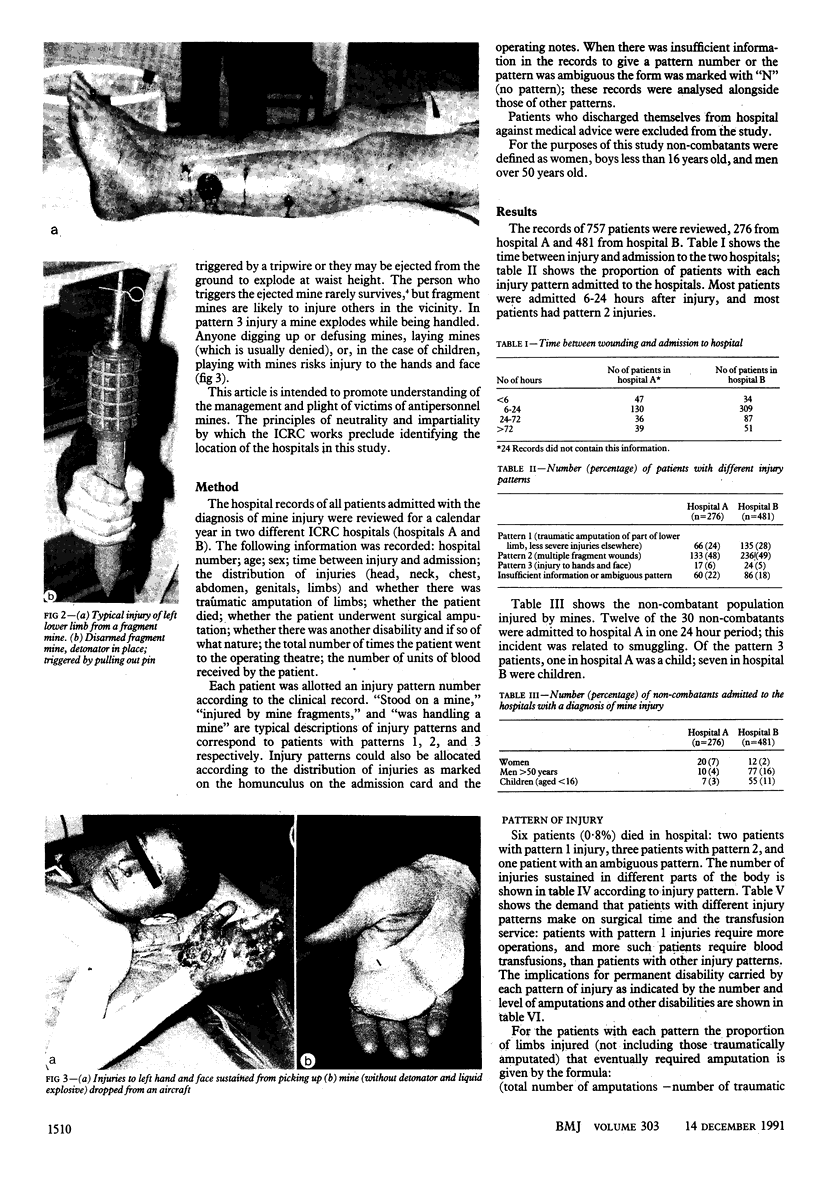
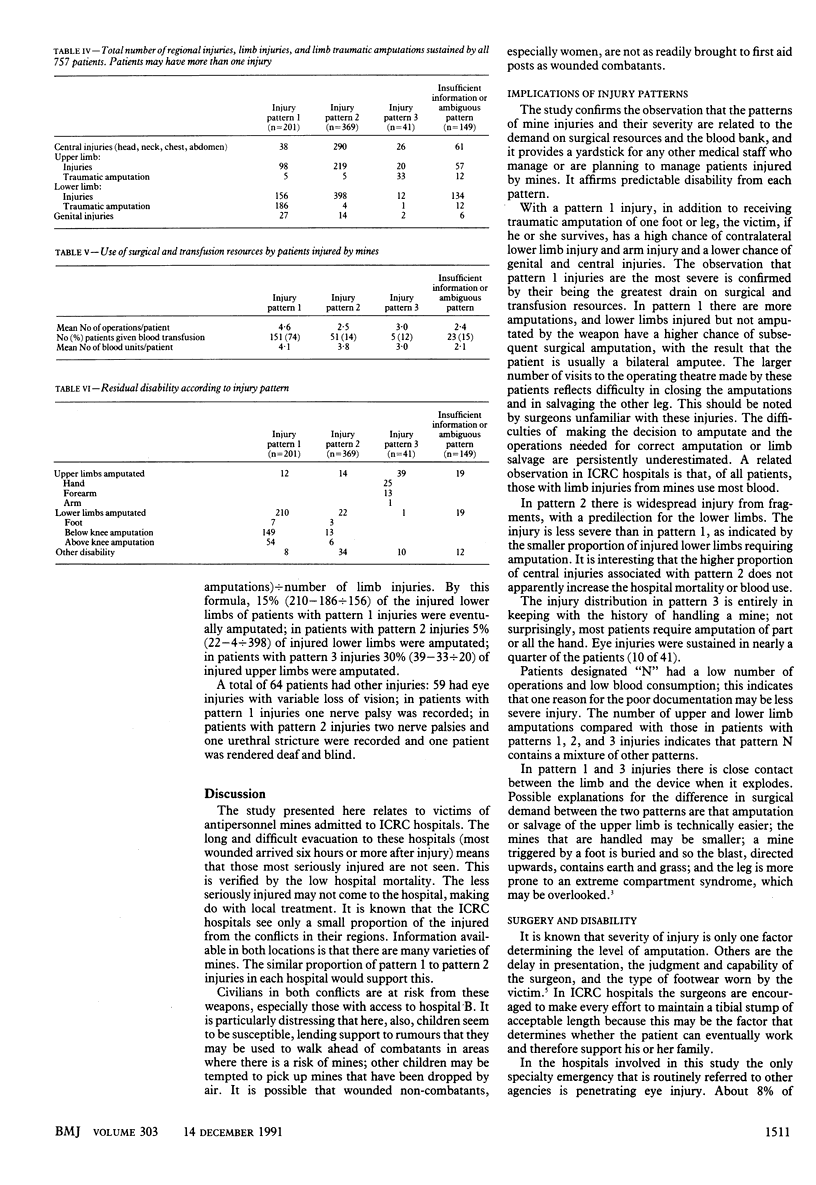
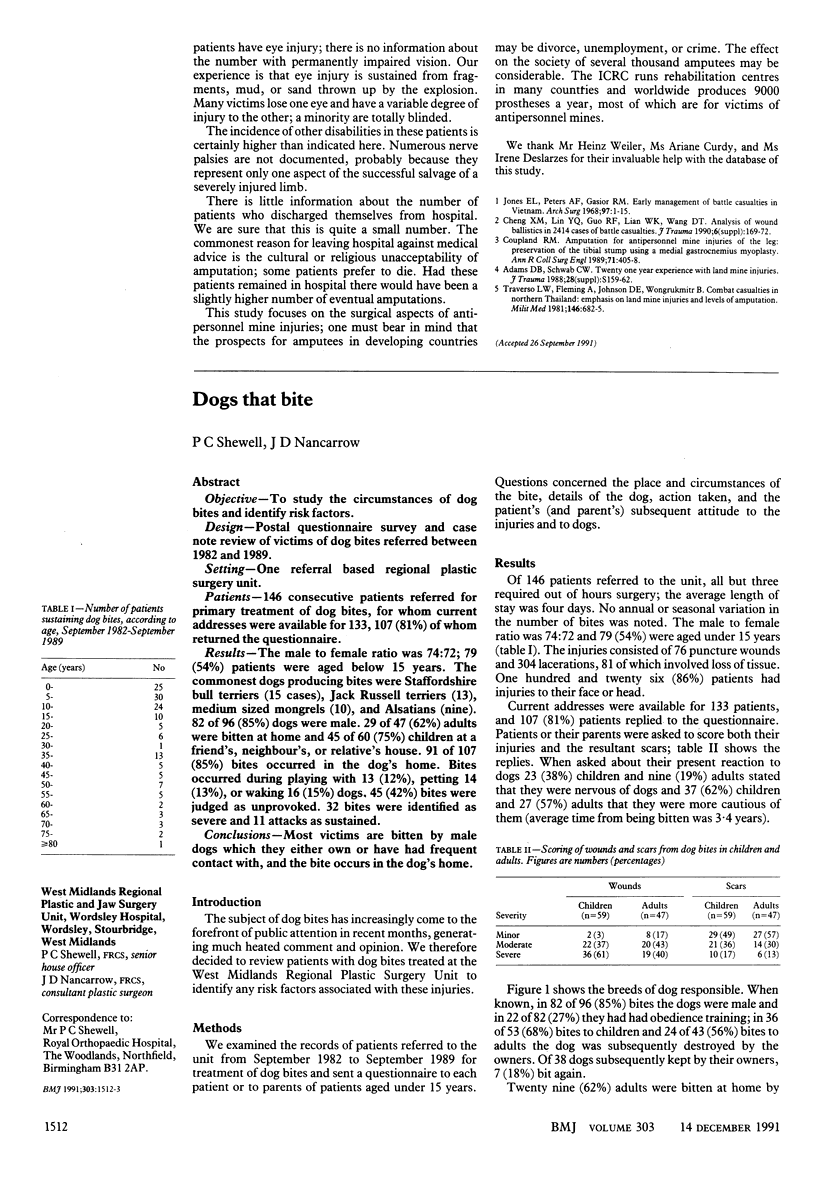
Images in this article
Selected References
These references are in PubMed. This may not be the complete list of references from this article.
- Adams D. B., Schwab C. W. Twenty-one-year experience with land mine injuries. J Trauma. 1988 Jan;28(1 Suppl):S159–S162. doi: 10.1097/00005373-198801001-00032. [DOI] [PubMed] [Google Scholar]
- Coupland R. M. Amputation for antipersonnel mine injuries of the leg: preservation of the tibial stump using a medial gastrocnemius myoplasty. Ann R Coll Surg Engl. 1989 Nov;71(6):405–408. [PMC free article] [PubMed] [Google Scholar]
- Johnson D. E., Fleming A., Wongrukmitr B., Traverso L. W. Combat casualties in Northern Thailand: emphasis on land mine injuries and levels of amputation. Mil Med. 1981 Oct;146(10):682–685. [PubMed] [Google Scholar]
- Jones E. L., Peters A. F., Gasior R. M. Early management of battle casualties in Vietnam. An analysis of 1,011 consecutive cases treated at a mobile army surgical hospital. Arch Surg. 1968 Jul;97(1):1–15. doi: 10.1001/archsurg.1968.01340010031001. [DOI] [PubMed] [Google Scholar]



